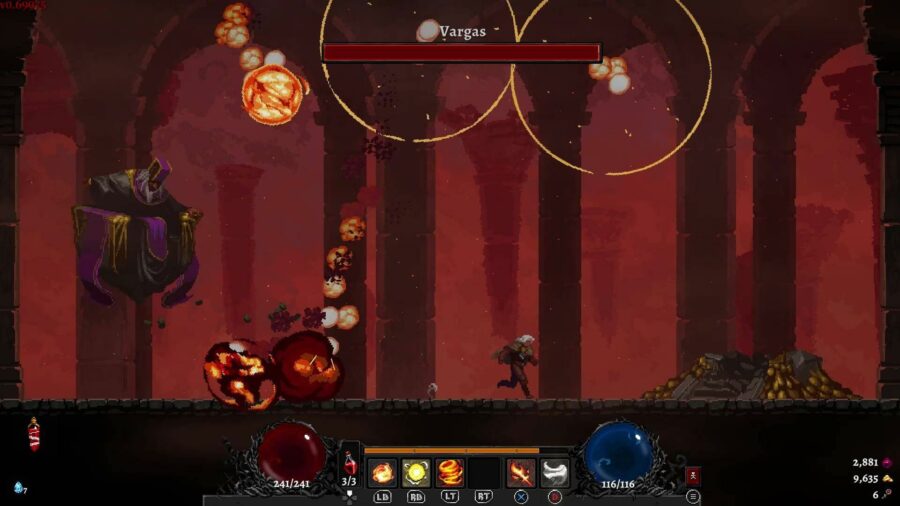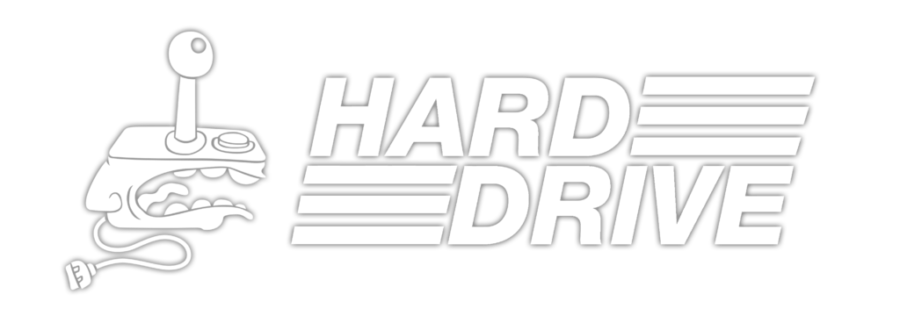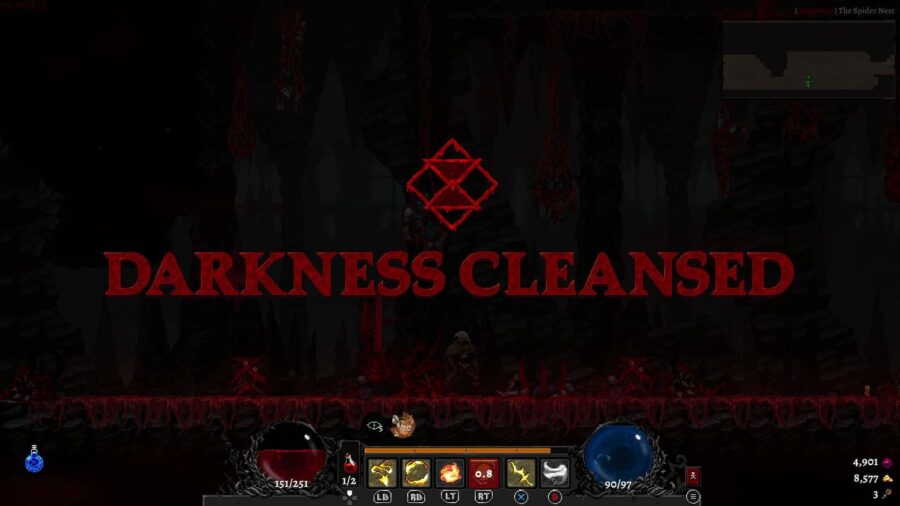Starting with 2002’s Harmony of Dissonance, several of the Castlevania games on Game Boy Advance and Nintendo DS let you unlock a “boss rush” mode as a post-game extra. The details changed between entries, but the general idea was to slap together the most overpowered character build possible and take on all the toughest enemies in the game in a row. Ideally, you’d do it without slowing down.
Dragon is Dead, now available in Steam Early Access, feels like one of those boss rush modes got extended into a full game. Like Dragon Ruins, it strips down an established genre to some of its most basic elements; unlike that game, Dragon is Dead then grabs a few new mechanics and builds itself back up. There’s a lot of Dead Cells in here with some of Diablo’s loot systems and the everything-is-utterly-screwed apocalypse vibe of a typical Soulslike, all run through a Castlevania filter.
In Dragon is Dead, the last of the great dragons, Guernian, has gone evil. As a result, armies of monsters have spread across the countryside, and many of the great institutions of humanity have been corrupted into Guernian’s service.
You enter the battle as a Successor, who can’t stay dead as long as there are demons left to fight. Your job is to punch through everything between you and Guernian, then take him down.
(I think that’s the story, anyway. For some reason, Dragon is Dead delivers all of its exposition through sudden five-minute lore bombs whenever you reach certain points on the map. It can go for two hours without trying to expand its world, then suddenly blast you in the face with the ol’ verbal firehose. I like goofy video game lore and I still ended up a little lost.)

Dragon is Dead leaves a strong first impression. From the moment you boot it up, it features some of the best pixel art I’ve seen in a game for quite some time. It’s fluid, imaginative, and somehow manages to stay visually interesting, despite being set in a procession of gray-and-brown corridors. There’s some real thematic resonance in how you’re often the most colorful thing in the game, because you’ve gone into some haunted graveyard or recent battlefield to kill everything inside with lightning.
At the same time, this game is out to cancel your birthday. Dragon is Dead is a challenge from the start, where every little mistake can compound into something that’ll end your run.
Each room along your journey is full of monsters that are designed to surprise you, with attacks that stretch further or track you better than you’d think they would. You’ve got a double-jump and a dodge move with some surprisingly forgiving invincibility frames, but healing’s initially scarce.
The boss fights are a particular highlight, once you can stay alive long enough to appreciate them. Each one feels like it could function as the final encounter of a game, with multiple attack patterns, angles of approach, and the occasional good old-fashioned cheap hit from nowhere.

That turns the first couple of hours of Dragon is Dead into a slow, grueling process of learning the ropes. You’re trying to inch through each screen as efficiently as possible while assembling a viable character build (when in doubt, get more lightning magic), until you manage to reach the next boss. Then the goal shifts into getting there with enough resources in reserve to actually start learning the fight.
When you die, Dragon is Dead returns you to the first room in the game, with any gear you’ve found, but without your gold, skills, artifacts, and character levels. Everything you’ve been through up to that point gets reset. You aren’t quite starting from flat zero, but it’s close.
That does create a unique frustration. If you’re stuck on any particular boss in Dragon is Dead, you have to run through everything up to it before you can try again. Every run is an iron man challenge. It reminds me of trying to do one-credit clears of old arcade and console games.
That being said, Dragon is Dead does gradually dole out upgrades and bonuses at a reasonable clip as you get further into the game. Your reward for killing the first boss, for example, is access to an alchemist in the starting village who can upgrade your health potions. Dragon is Dead still has a few major hurdles, like how the fourth boss has maybe eight times the health of the third for no apparent reason, but you do make progress.
Naturally, Dragon is Dead is still in Early Access, so most of its systems are subject to change. The developers are already ironing a few issues out, such as rolling some stats together for simplicity’s sake and giving you extra anti-air options.
If I had to point out one serious problem that isn’t mentioned in the upcoming patch notes, it’s that it’s easy to get “stunlocked” in Dragon is Dead. You don’t get any particular invincibility windows or knockback when you take a hit, so several bosses can combo you to death in one move. Even when you’re a good distance into the game, with a decent health pool and legendary equipment, it’s possible to take the wrong hit at the wrong time and die on the spot. It doesn’t feel like it’s intended behavior.
For the time being, Dragon is Dead has an old-school flair to it that kept me playing. It’s addictive in the same way as a lot of the bonus modes in Castlevania used to be, and once you get to a point where you can consistently stomp the first boss, it really opens up. There’s a lot of Early Access weirdness baked into Dragon is Dead at the moment, but with time and work, this could turn into a classic.



